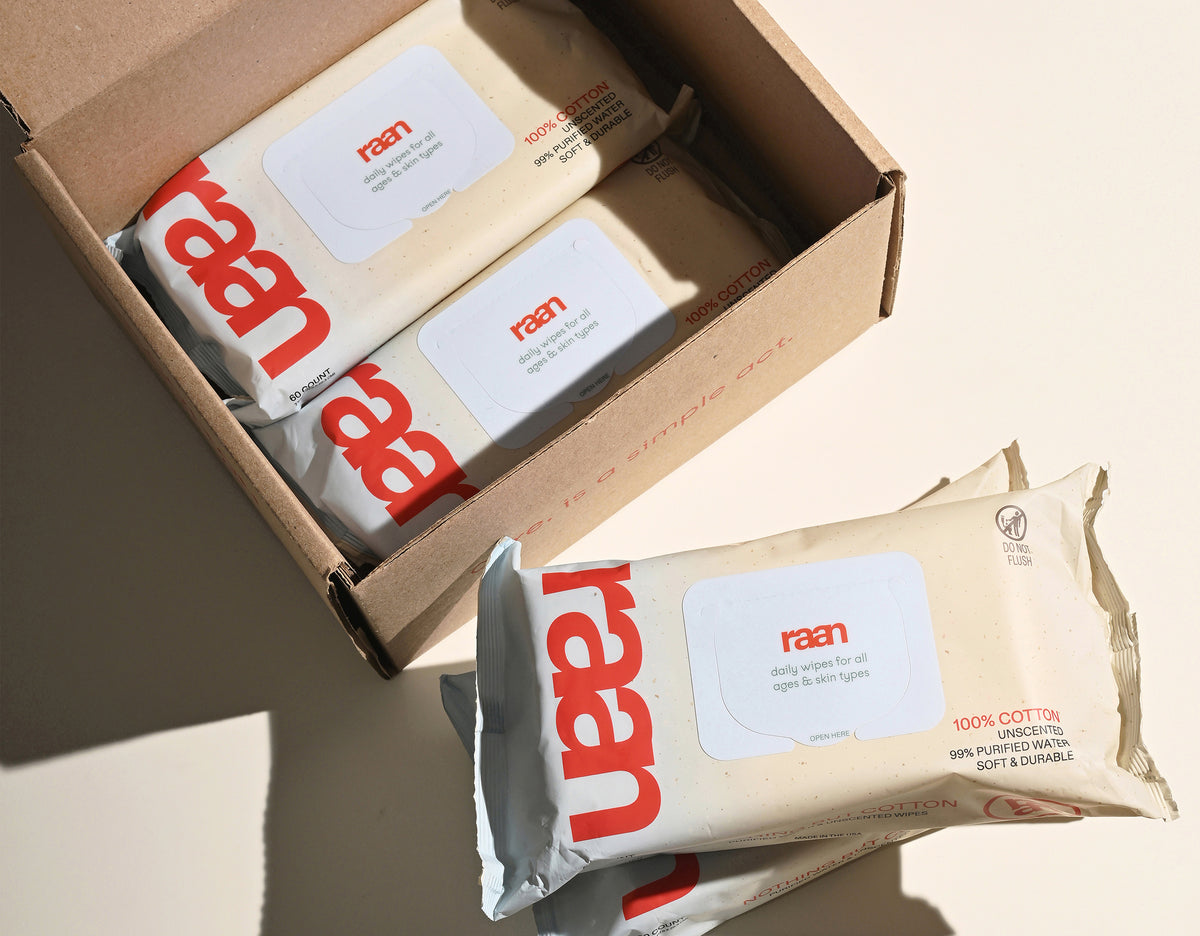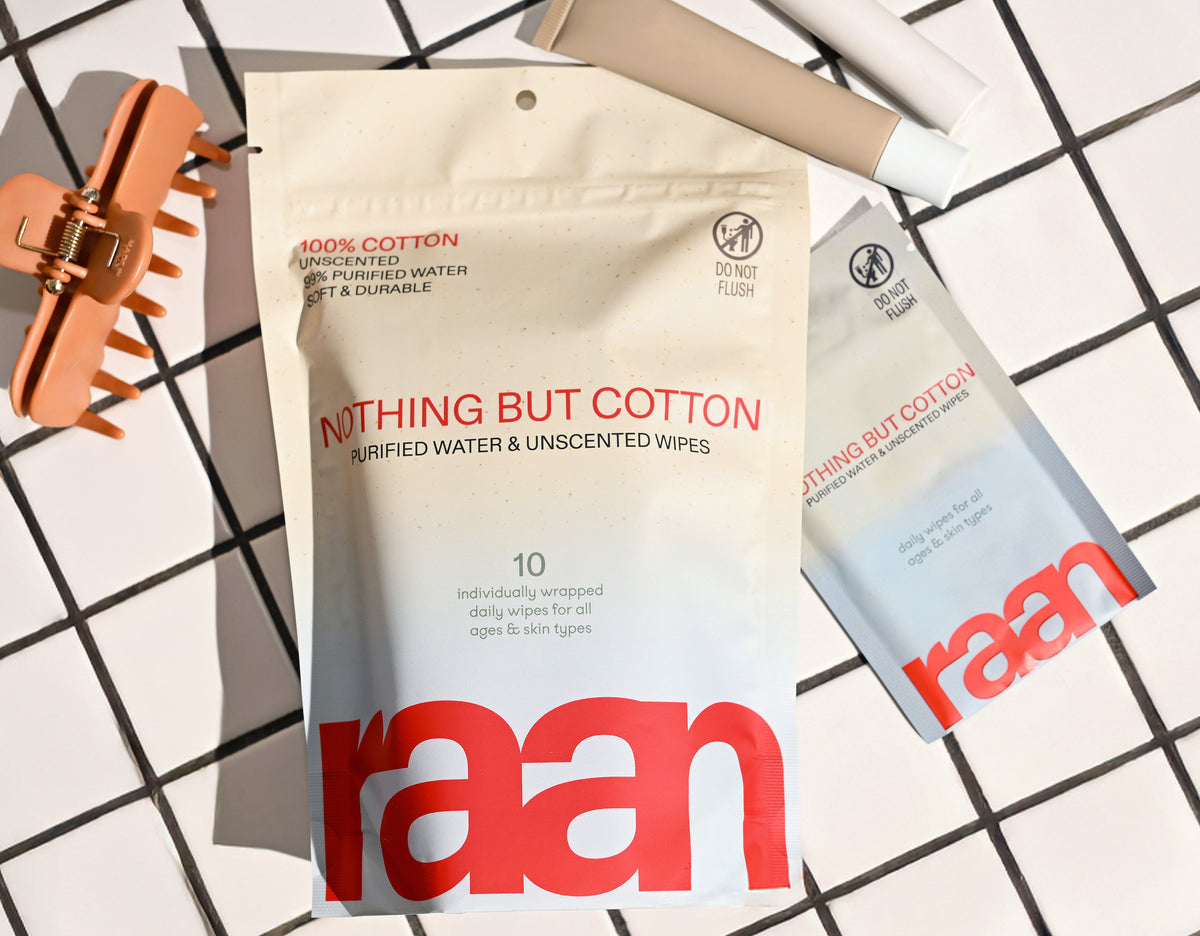Key Takeaways
- Sensitive newborn skin is common, affecting up to 60% of babies in their first months.
- The sensitivity is due to an underdeveloped skin barrier that is still maturing.
- Newborn skin can react to everyday items like clothing and wipes.
- Understanding the reasons behind skin sensitivity helps caregivers provide better care.
- Proper knowledge can reduce worry and increase confidence in caring for sensitive skin.
Table of Contents
- What Makes Newborn Skin So Sensitive?
- How to Recognize Signs of Sensitive Skin in Newborns
- What Causes Sensitivity? (And How to Minimize Everyday Irritants)
- Everyday Care: Safe Cleansing, Moisturizing & Diapering for Sensitive Newborn Skin
- Choosing Products for Sensitive Newborn Skin
- Creating a Skin-Friendly Environment
- Sensitive vs. Typical Newborn Skin: Key Differences
- Sensitive Skin Newborn Care Essentials
- Product Comparison: What Actually Matters
- Long-Term Skin Health Considerations
Sensitive Newborn Skin: A Real-World Care Guide
Your newborn's skin reacts to everything, from the softest cotton onesie to the gentlest wipe. This isn't unusual; it's biology. Sensitive newborn skin affects up to 60% of babies in their first months, stemming from an underdeveloped skin barrier that's still learning to protect itself. Understanding why this happens and how to respond makes the difference between constant worry and confident care.
New parents often mistake normal sensitivity for serious skin conditions, leading to product-switching cycles that can worsen irritation. The key lies in recognizing what's typical adaptation versus true sensitivity, then choosing care routines that support rather than overwhelm your baby's developing skin barrier.
For parents seeking the safest options, the only unbleached, 100% cotton baby wipe for sensitive skin offers a gentle solution, while unbleached, 100% cotton pocket wipes are perfect for on-the-go cleansing without harsh additives.
Quick Answers for Concerned Parents
- Why so reactive? Newborn skin is 20-30% thinner than adult skin with an immature protective barrier.
- When to worry? Persistent redness, open sores, or symptoms that worsen after 5-7 days need medical attention.
- Best approach? Minimal, fragrance-free products with transparent ingredient lists.
What Makes Newborn Skin So Sensitive?
Newborn skin operates like a house with windows still under construction. The stratum corneum, your baby's outermost protective layer, is significantly thinner and more permeable than adult skin, allowing moisture to escape rapidly while letting potential irritants penetrate more easily.
This heightened permeability stems from incomplete lipid barrier development. Adult skin contains mature ceramides and fatty acids that create waterproof seals between skin cells. In newborns, these protective lipids are still forming, leaving microscopic gaps that compromise the skin's ability to retain moisture and block environmental triggers.
The pH balance also differs dramatically. Adult skin maintains a slightly acidic pH of 4.5-5.5, which supports beneficial bacteria and deters harmful microbes. Newborn sensitive skin starts with a more neutral pH around 6.5-7.5, gradually acidifying over the first year as the skin barrier matures and establishes its protective acid mantle.
How to Recognize Signs of Sensitive Skin in Newborns

True sensitivity goes beyond typical newborn skin quirks like milia or minor baby acne. Watch for persistent patterns: redness that doesn't fade within hours, dry patches that return despite moisturizing, or reactions to products that claim to be "gentle" or "for babies."
5 Telltale Signs Your Baby's Skin is Sensitive
- Redness or irritation lasting more than 24 hours after product contact
- Recurring diaper rash despite frequent changes and barrier creams
- Rough, scaly patches on cheeks, arms, or legs that persist
- Immediate reaction to new clothing, detergents, or wipes
- Skin that feels constantly dry or tight, even after moisturizing
Distinguish these symptoms from harmless newborn skin changes. Milia (tiny white bumps) and newborn acne typically resolve without intervention. Sensitive newborn skin shows consistent patterns of reactivity and requires ongoing gentle management rather than waiting for natural resolution.
What Causes Sensitivity? (And How to Minimize Everyday Irritants)
Genetics play the primary role, if parents have sensitive skin, eczema, or allergies, babies inherit a 60-70% likelihood of similar sensitivities. However, environmental triggers often determine whether genetic predisposition becomes active sensitivity.
The most common culprits hide in everyday care products. Fragrances, even those labeled "natural," contain multiple compounds that can trigger reactions. Synthetic preservatives like parabens and formaldehyde-releasing agents maintain product shelf life but can overwhelm sensitive skin barriers. Plastic fibers in conventional wipes create mechanical irritation while trapping moisture against delicate skin.
Top Everyday Triggers to Watch For
- Product ingredients: Fragrances, dyes, alcohol, synthetic preservatives
- Mechanical irritants: Plastic-fiber wipes, rough fabrics, over-scrubbing
- Environmental factors: Temperature extremes, low humidity, cigarette smoke
- Biological triggers: Saliva, urine contact, bacterial imbalances
Minimize exposure through strategic swaps: choose unbleached, 100% cotton wipes over synthetic alternatives, switch to fragrance-free laundry detergents, and maintain indoor humidity between 40-60% to support skin barrier function. For more tips, see this guide to soft wipes for newborn skincare.
Everyday Care: Safe Cleansing, Moisturizing & Diapering for Sensitive Newborn Skin
Effective care for sensitive newborn skin follows the principle of gentle minimalism. Over-cleaning strips natural oils faster than the immature skin barrier can replace them, while under-cleaning allows irritants to accumulate.
Gentle Bathing in 5 Steps
Limit baths to 5-10 minutes, 2-3 times weekly unless visibly soiled. Use lukewarm water (98-100°F) and your clean hands or a soft cotton cloth. Pat, never rub, skin dry and apply a simple, fragrance-free moisturizer within three minutes to lock in hydration.
Quick Win for Parents
Keep bath time short and sweet. Newborns don't need daily baths unless they're visibly dirty. Over-bathing strips natural oils that protect sensitive newborn skin.
Smart Moisturizing
Apply moisturizer when skin feels dry or after every bath. Use a pea-sized amount and choose products with minimal ingredients, ideally five or fewer. Look for simple formulations with ingredients like organic aloe, which provides gentle hydration without overwhelming delicate skin barriers.
Avoid products containing synthetic fragrances, dyes, or alcohol. These additives serve no functional purpose for sensitive newborn skin and often trigger irritation or dryness.
Diaper Area Protection
Change diapers every 2-3 hours for newborns, immediately after soiling. Clean gently with unbleached cotton wipes, like Raan's EWG-verified formula, that contain just water, organic aloe, and food-grade preservatives. This approach eliminates plastic fibers and harsh chemicals that commonly irritate the diaper area.
Pat the area completely dry before applying a new diaper. Use zinc oxide-based barrier cream only when redness appears, not as a daily routine.
Choosing Products for Sensitive Newborn Skin

Safe products for sensitive newborn skin require complete ingredient transparency. The fewer ingredients, the lower the risk of irritation. Look for certifications like EWG Verified, which ensures every ingredient meets strict safety standards for developing skin.
What Full Transparency Looks Like
Trustworthy products list every ingredient with its specific function. Raan wipes, for example, contain just six ingredients: purified water, sodium benzoate (food-grade preservative), potassium sorbate (food-grade preservative), ethylhexylglycerin (skin-conditioning), organic aloe (moisturizer), and citric acid (pH balance). Each serves a clear purpose without unnecessary additives.
Avoid products with vague terms like "natural fragrance" or "plant extracts." These umbrella terms can hide dozens of unlisted chemicals that trigger reactions in sensitive newborn skin.
| Product Feature | Safe for Sensitive Skin | Potential Irritants |
|---|---|---|
| Material | 100% cotton, unbleached | Plastic fibers, synthetic blends |
| Preservatives | Food-grade (sodium benzoate) | Parabens, formaldehyde releasers |
| Moisturizers | Organic aloe, simple oils | Synthetic fragrances, dyes |
| Certifications | EWG Verified, dermatologist-tested | No third-party verification |
Ingredients to Avoid
Skip products containing alcohol, synthetic fragrances, parabens, phthalates, or microplastics. These chemicals provide no benefit for cleansing but frequently cause dryness, redness, or allergic reactions in sensitive newborn skin.
Bleached materials also pose unnecessary risks. Chlorine bleaching leaves residual chemicals that can irritate delicate skin, while unbleached cotton maintains its natural protective properties.
Creating a Skin-Friendly Environment
Your home environment directly impacts sensitive newborn skin. Small changes in clothing choices, humidity levels, and household products can prevent daily irritation and support healthy skin development.
Gentle Clothing Choices
Dress babies in soft, breathable fabrics like cotton or bamboo. Wash new clothes before first wear to remove manufacturing chemicals and fabric sizing. Remove scratchy tags and choose flat seams that won't rub against sensitive areas.
Layer clothing for easy temperature adjustment rather than using heavy fabrics. Overheating can trigger heat rash and worsen existing skin sensitivity.
Optimal Indoor Conditions
Maintain indoor humidity between 40-60% to prevent skin from drying out. Use a humidifier during winter months when heating systems reduce moisture levels. Avoid placing space heaters directly near cribs, as concentrated heat can dehydrate sensitive newborn skin.
Regular vacuuming reduces dust and allergens that can settle on skin and bedding. Skip plug-in air fresheners and scented candles, these release chemicals that may irritate respiratory systems and sensitive skin.
Sensitive vs. Typical Newborn Skin: Key Differences
Understanding whether your baby has particularly sensitive skin helps you adjust care routines appropriately. While all newborn skin is delicate, some babies show heightened reactivity that requires extra attention.
Recognition Patterns
Babies with sensitive newborn skin typically react within hours to new products, show persistent dryness despite regular moisturizing, and develop rashes from fabrics or products that don't affect other children. Their skin often appears red or blotchy after minor friction.
For a deeper dive into product recommendations, read about the best baby wipes for sensitive skin.
Sensitive Skin Newborn Care Essentials

Managing sensitive newborn skin requires products specifically designed for delicate barriers. Unlike adult skin care, newborn-safe formulas must work within the constraints of developing skin that's still learning to protect itself.
Raan Sensitive Skin Wipes - Unbleached Cotton Formula
Best for: Daily cleansing, diaper changes, and face cleaning for reactive skin
Raan's approach centers on material integrity, unbleached, 100% cotton fibers paired with just five EWG-verified ingredients. The formula contains 99% water and organic aloe, with food-grade preservatives that maintain safety without synthetic additives. This combination addresses the core challenge of newborn sensitive skin: providing effective cleansing while respecting the skin's natural development process.
Why Cotton Matters: Unbleached cotton maintains its natural fiber structure, creating a gentler cleansing surface compared to synthetic materials that can create micro-abrasions on thin newborn skin.
Water-Based Alternatives - 99% Water Formulas
Best for: Parents seeking minimal ingredient exposure
Many brands offer high-water-content wipes, but material composition varies significantly. Some use synthetic substrates that can feel softer initially but may contain plastic fibers that don't biodegrade and can harbor bacteria over time.
Pros:
- Minimal chemical exposure
- Generally hypoallergenic
- Widely available
Cons:
- Substrate materials often undisclosed
- May contain microplastics
- Packaging typically uses more plastic
Fragrance-Free Conventional Options
Best for: Budget-conscious families with mildly sensitive skin
Standard fragrance-free wipes eliminate obvious irritants but often retain synthetic preservatives, bleached materials, and undisclosed processing chemicals. While these may work for some babies, they don't address the material science aspect of skin contact.
Pros:
- Cost-effective
- Remove fragrance irritants
- Convenient availability
Cons:
- Limited ingredient transparency
- Bleached substrates common
- Synthetic preservative systems
For families who want a convenient bundle, the mess-ready pack provides a practical solution for sensitive newborn skin care at home and on the go.
Product Comparison: What Actually Matters
When evaluating products for sensitive skin newborn care, three factors determine real-world performance: substrate material, ingredient transparency, and preservative approach.
| Feature | Raan Wipes | 99% Water Brands | Fragrance-Free Conventional |
|---|---|---|---|
| Substrate Material | Unbleached 100% cotton | Varies (often undisclosed) | Typically bleached synthetic blend |
| Ingredient Count | 5 total ingredients | 6-12 typical range | 8-15+ ingredients |
| Preservative Type | Food-grade only | Mixed approaches | Synthetic preservative systems |
| Transparency Level | Full ingredient sourcing disclosed | Water percentage highlighted, others variable | Basic ingredient lists |
| Certifications | EWG Verified, Natural Cotton Seal | Varies by brand | Limited third-party verification |
The substrate material proves most critical for sensitive newborn skin because it determines the physical interaction between product and skin barrier. Unbleached cotton maintains natural fiber properties that work with developing skin rather than against it. For a complete starter bundle, consider the starter set for sensitive newborn care.
Long-Term Skin Health Considerations
Choices made during the newborn period establish patterns that influence skin barrier development throughout the first year. Research indicates that consistent use of gentle, minimally processed materials supports natural barrier maturation. For more in-depth information, see these skincare guidelines for newborns.
The economic reality matters too. Families using products designed for newborn sensitive skin often report fewer secondary issues, reduced diaper rash frequency, less need for additional barrier creams, and fewer product switches due to reactions. This translates to both cost savings and reduced decision fatigue for new parents.
Frequently Asked Questions
What causes newborn skin to be more sensitive compared to adult skin?
Newborn skin is thinner and has an underdeveloped protective barrier, making it more permeable. This means moisture escapes more easily and irritants can penetrate more readily, leading to increased sensitivity compared to adult skin.
How can parents distinguish between normal newborn skin sensitivity and signs that require medical attention?
Normal sensitivity may include mild redness or dryness that improves with gentle care. Persistent redness, open sores, or symptoms that worsen after 5 to 7 days should prompt a visit to a healthcare professional.
What are the best practices for caring for sensitive newborn skin to minimize irritation?
Use minimal, fragrance-free products with transparent ingredients, dress babies in soft, breathable fabrics, and maintain gentle cleansing and moisturizing routines. Avoid over-washing and harsh additives to support the skin’s natural barrier.
Which types of products and fabrics are safest for babies with sensitive skin?
Choose fragrance-free, hypoallergenic products made with unbleached, 100% cotton and simple, food-grade preservatives. Soft, breathable fabrics like natural cotton help reduce irritation and support sensitive skin.






